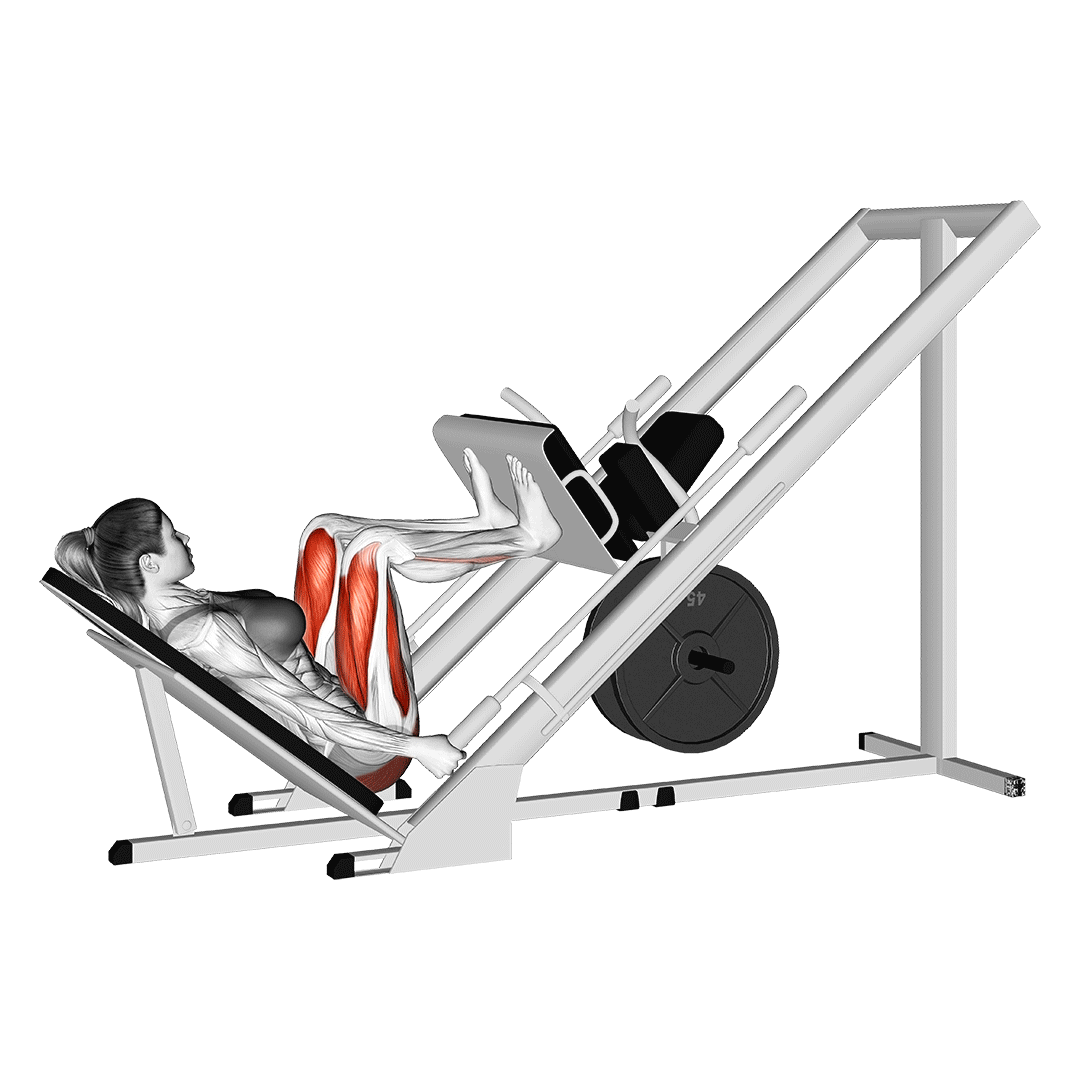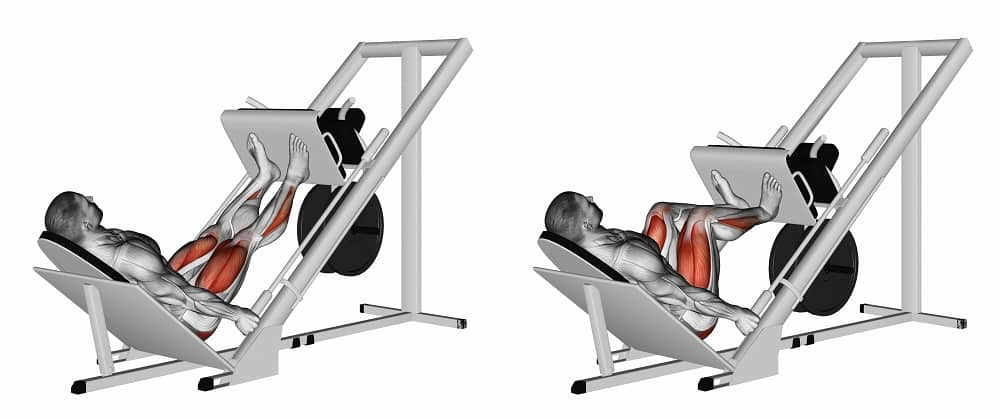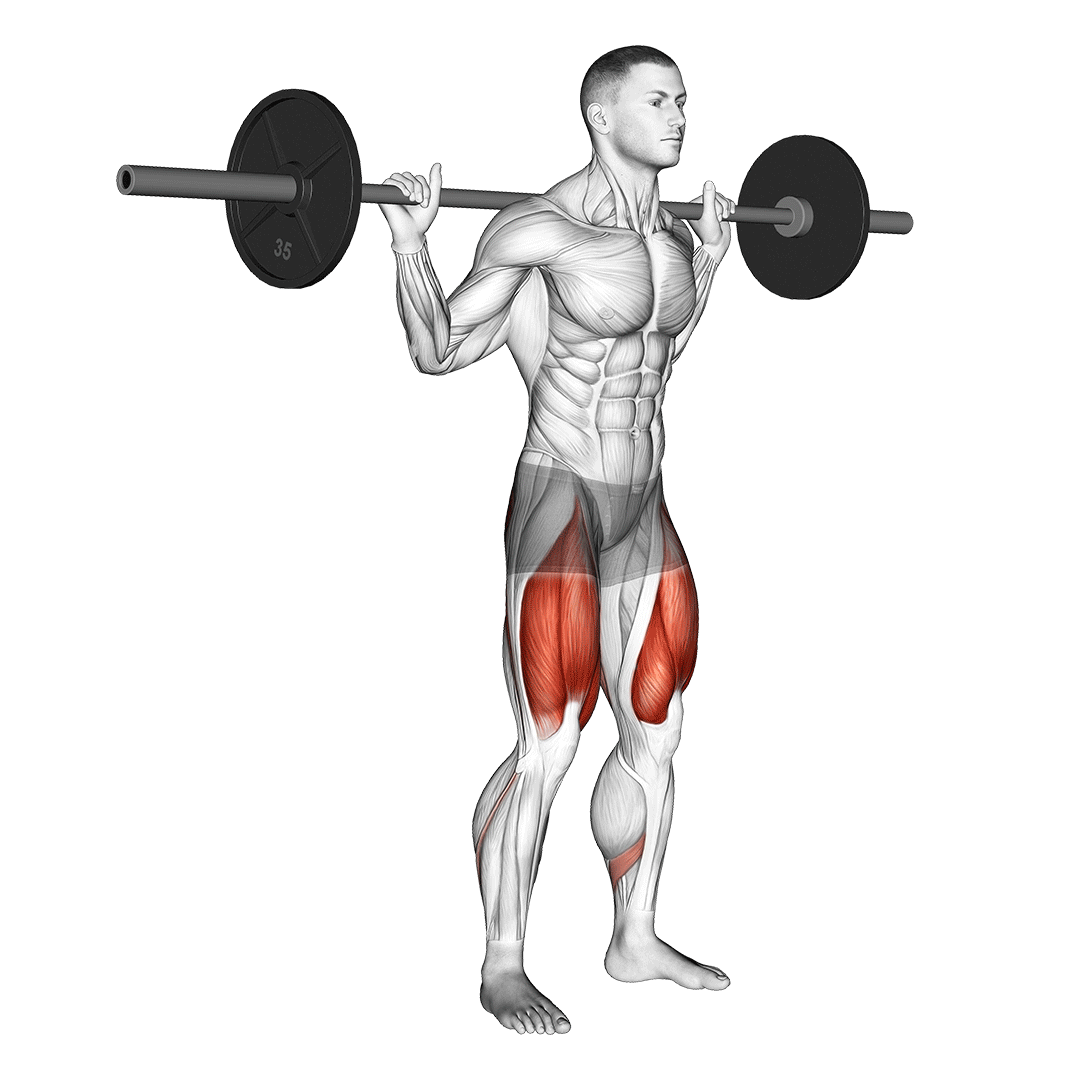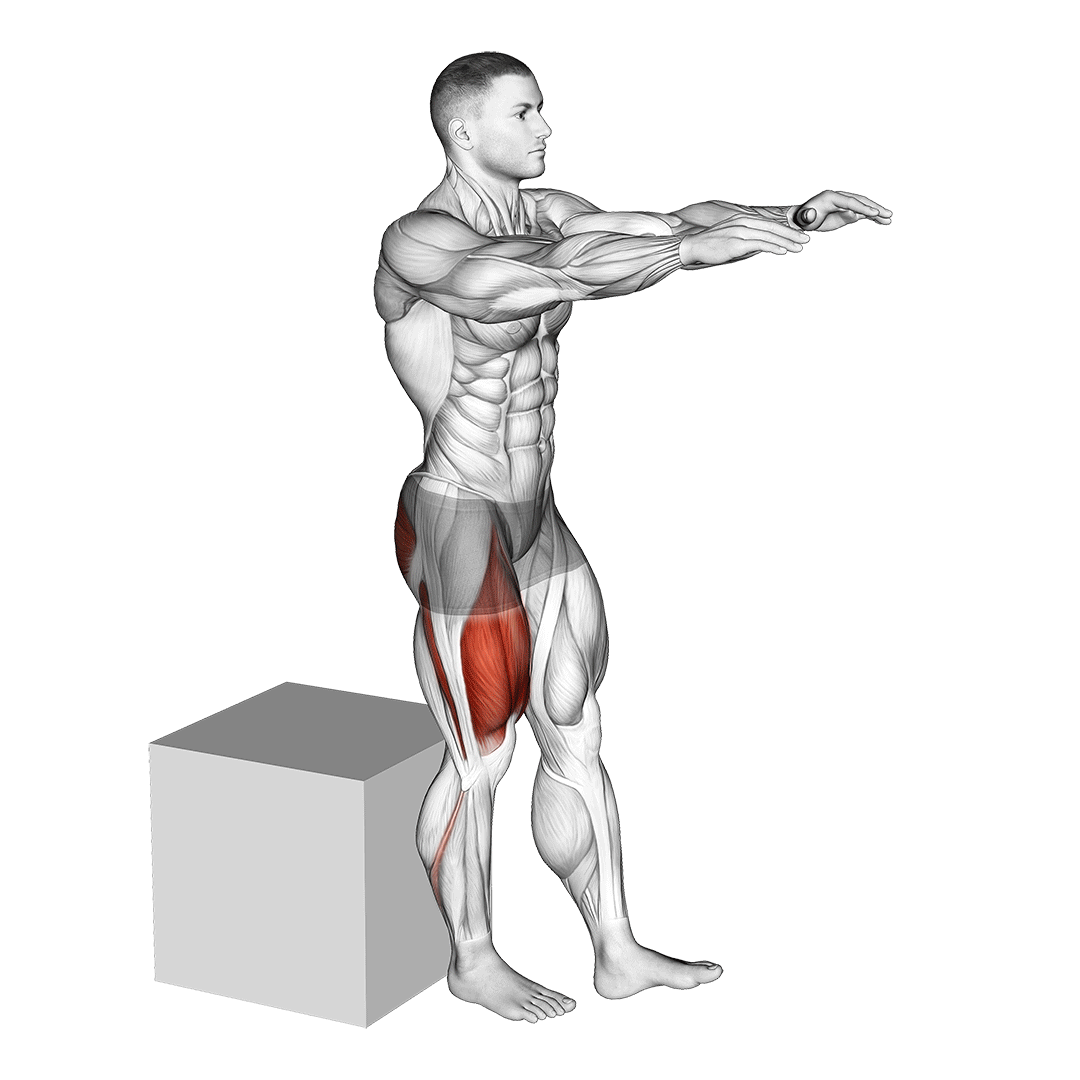5 Best Leg Press Alternatives at Home (with Pictures!)
Before substituting the leg press, it's important to understand what the leg press is, and what aspects of it must be recreated by an alternative exercise so as to preserve the intended purpose of the leg press within a workout.
There are quite a number of possible leg press alternatives that may be done at home - all of which are lower body compound movements that train the same muscle groups, though with a somewhat different type of recruitment due to the machine-based nature of the leg press.
Why Replace the Leg Press?
Despite the effectiveness and benefits of the leg press as an exercise, certain situations may arise that call for a different exercise to be performed.

Whether the lifter has no access to the gym, desires greater lower body stability or simply wishes to make use of the benefits of free weight exercises - there is doubtless the perfect exercise to meet their needs.
Just in case, it is a good idea to go over the original characteristics of the leg press so as to better assess what exercises may act as alternatives.
An Overview of the Leg Press
The leg press is a machine-based compound movement best known for its effectiveness at working the quadriceps femoris, though it is also known to target the posterior chain muscles as well.

It is frequently utilized by bodybuilders and strength-based athletes as an adjunct exercise to heavier free weight exercises like the squat or deadlift, but can also act as a primary compound movement as well.
The main benefit to performing the leg press lies in its simplicity and relatively low risk of injury in comparison to other heavy lower-body compound exercises, hence its inclusion into even novice-level workout plans.
What Muscles Should be Worked by a Leg Press Alternative?
The most important aspect to look at when selecting potential alternative exercises are the muscles targeted.
The leg press recruits the muscles of the quadriceps, the glutes, the hamstrings and the hip flexors - meaning that any effective alternative should do so as well.
This narrows the pool of potential exercises somewhat, as not many at-home movements can recruit all the aforementioned muscles simultaneously.
1. Free Weight Squats
The free weight squat is the quintessential leg exercise, best known for its absolute effectiveness at building lower body strength and size.

Like the leg press, it is a multi-joint compound exercise that trains the quadriceps, glutes and hamstrings - though with greater core and hip flexor isometric contraction.
Equipment Needed
Free weight squats may be performed with all sorts of resistance equipment, from dumbbells and kettlebells to a straight barbell and rack.
In the event that you do not have any sort of training equipment at home, or it is of insufficient weight, bodyweight squats may be more appropriate.
Benefits as an Alternative
The most significant benefit of free weight squats is in its effectiveness at building mass and strength, surpassing even that of the leg press.
Furthermore, substituting the leg press with weighted squats improves recruitment of stabilizer muscle groups, reducing any risk of future injury and creating a stronger lower body overall.
How-to:
To perform a weighted squat, the exerciser will load the weight and place their feet slightly wider than hip-width apart, toes pointing somewhat outwards.
Contracting the core and ensuring that the spine is at a neutral curvature, they will then lower themselves by bending at the hips and knees simultaneously, stopping once reaching parallel or beyond-parallel depth.
Then, driving through the heels, they will return to a standing position, thereby completing the repetition.
2. Body Weight Squats
Much like weighted squats, body weight squats are quite similar to the leg press in the way that they are both lower body compound movements that feature intense recruitment of the quadriceps, glutes and hamstring muscles.

Mechanically, body weight squats are almost identical to the leg press save for a different angle of resistance and somewhat less quadriceps focus throughout the range of motion.
Equipment Needed
Unlike weighted squats, body weight squats are entirely a calisthenic movement and require no equipment or significant exercise familiarity whatsoever - making them the perfect at-home leg press alternative exercise.
Benefits as an Alternative
Apart from the lack of equipment requirements, body weight squats are also among the lowest-risk leg exercises available - making them excellent for individuals that are avoiding the leg press due to a risk of injuries.
Furthermore, body weight squats may be performed at high volume, and can otherwise act as a progression step to more intense calisthenic leg exercises like the pistol squat.
How-to:
To perform the body weight squat, the exerciser will stand with their feet hip-width apart and their feet pointed forward.
Contracting the core and keeping the head facing forward, they will then bend at the hips and knees until reaching parallel squat depth.
From this position, they will then extend their knees and hips once more, stopping once they have returned to the original standing position.
3. Weighted Bulgarian Split Squats
Bulgarian split squats are a unique take on the standard squat movement that trains only one leg at a time - allowing for greater focus per repetition.

Split squats, much like the leg press, are multi-joint compound exercises that target the entirety of the legs, but place additional focus on the quadriceps muscle group in particular.
Despite their dissimilarity in terms of mechanics, split squats are quite effective as a leg press alternative due to the amount of volume possible within a single set, allowing it to rival the latter movement in terms of possible repetition volume.
Equipment Needed
Split squats will require some sort of weighted fitness equipment, such as a pair of dumbbells or kettlebells, as well as a chair or bench with which to rest the opposite leg on.
It is also possible to perform the exercise unweighted and with household furniture, so long as the leg is elevated at approximately knee-level.
Benefits as an Alternative
The split squat acts as an excellent alternative to the leg press for lifters that require greater focus on only one side of the body.
Furthermore, the unique position of the split squat allows for far greater isometric development to occur, improving the stability of the lower body in comparison to the leg press.
How-to:
To perform a Bulgarian split squat, the exerciser will rest one foot on a bench or chair, with the other placed somewhat further forward from the hips so as to create a more stable stance.
Then, bending at the knee and pelvis, the exerciser will lower themselves with the forward-facing leg, allowing the knee of the rear leg to drop alongside the rest of the body.
Once the forward-facing thigh is relatively parallel to the floor, the exerciser will push through their heel and return to the starting position, repeating the process with the legs switched so as to complete the repetition.
4. Pistol Squats
Pistol squats are a classic body weight exercise that may be considered both a progression and an alternative to the leg press movement.

They are a multi-joint compound exercise primarily performed by intermediate or advanced level calisthenic athletes for the greater level of intensity in comparison to other body weight leg exercises.
As an at-home leg press alternative, pistol squats are both convenient and effective - though they may be quite difficult to perform for novice exercisers or individuals just returning to resistance training.
Equipment Needed
Pistol squats require no equipment whatsoever, but assisted pistol squats may use a countertop or table as support if the exerciser is inexperienced or lacks lower body stability.

Benefits as an Alternative
Pistol squats may be one of the best possible leg press alternatives to perform at home, as they are not only equipment-free, but also just as intense as working weight leg press repetitions if performed correctly.
Furthermore, they rectify many of the issues that develop when solely utilizing the leg press as a primary compound exercise; greater stability development, a capacity for repetitions of greater quality and just as much time under tension if needed.
How-to:
To perform a pistol squat, the exerciser will raise one heel up to approximately shin-level height ahead of them, extending their arms forward for additional balance.
Then, contracting the core and squeezing the glutes, they will lower themselves on the remaining leg, lowering themselves as far as their mobility will allow.
Note that some rounding of the upper back is normal in this exercise, unlike in other squat variations.
Now at bottom depth, they will drive through the heel and pull themselves back into the starting position, switching to the opposite leg so as to complete the repetition.
5. Step Ups
For exercisers seeking volume over resistance, step ups are among one of the best at-home replacements for the leg press - especially if burning fat and improving cardio are part of their goals.

Much like the leg press, step ups are a mbulti-joint compound exercise that work the entirety of the lower body, but nonetheless place extra focus on the quads as they do so.
As a cross between cardio and resistance training, step ups may be incorporated into any sort of training program, making them a versatile and highly convenient at-home movement to substitute for the leg press.
Equipment Needed
Step ups only require an elevated and stable object with which to step atop. Though they are traditionally performed with plyometric blocks, household fixtures like stairs, concrete benches or (stable) stools may be used.
Remember to only pick items that are stable and unlikely to topple as you perform the exercise.
For additional resistance, the exerciser may also grip weighted objects in both hands, such as dumbbells or kettlebells.
Benefits as an Alternative
Step ups are perfect as a leg press alternative due to their high intensity, capacity to recruit every muscle in the lower body and their versatility as an exercise.
They are particularly useful as a leg press alternative if the original exercise was usually performed at high volume, as step ups will often involve lengthy sets before reaching a point of actual fatigue.
How-to:
In order to perform a set of step ups, the exerciser will stand facing the elevated object that they have chosen.
Then, firmly placing one foot atop the object, they will draw the other foot atop as well, stretching out the stair-climbing motion so as to maximize time under tension.
Once atop the bench or chair, they will lower the first foot back to the ground, following with the latter leg. Once the repetition is complete, further repetitions should reverse the order in which the legs are moved so as to avoid unbalanced training stimulus.
Frequently Asked Questions (FAQ)
Is the Leg Press the Same as a Squat?
No - the leg press has several distinctions from the standard squat exercise, and as such shouldn’t necessarily be considered the same exercise.
The leg press places more emphasis on the quadriceps muscle than squats do, but will also utilize stabilizer muscle groups to a far lesser degree - all due to the difference in stance and angle of resistance between the two exercises.
Can You Do the Leg Press with Dumbbells?
Yes - though it is more of a substitute exercise rather than a direct 1:1 replication of the leg press.
Exercises that may act as a dumbbell-based alternative to the leg press are; the dumbbell hack squat, the dumbbell squat and the dumbbell deadlift.
Final Thoughts
In actuality however, it can be quite difficult to replicate the exact stimulus and recruitment pattern of a machine-based exercise with free weights or bodyweight alone, and if the leg press is truly what you’re looking for - it may be better to purchase a gym membership, or to invest in a home-gym leg press machine.
Otherwise, performing any of the aforementioned alternatives should more than help keep the flow of your progression steady - even if you’re stuck at home, or on vacation.
References
1. Martín-Fuentes I, Oliva-Lozano JM, Muyor JM. Evaluation of the Lower Limb Muscles' Electromyographic Activity during the Leg Press Exercise and Its Variants: A Systematic Review. Int J Environ Res Public Health. 2020 Jun 27;17(13):4626. doi: 10.3390/ijerph17134626. PMID: 32605065; PMCID: PMC7369968.
2. Stastny, Petr PhD; Tufano, James J. MS; Golas, Artur PhD; Petr, Miroslav PhD. Strengthening the Gluteus Medius Using Various Bodyweight and Resistance Exercises. Strength and Conditioning Journal 38(3):p 91-101, June 2016. | DOI: 10.1519/SSC.0000000000000221
